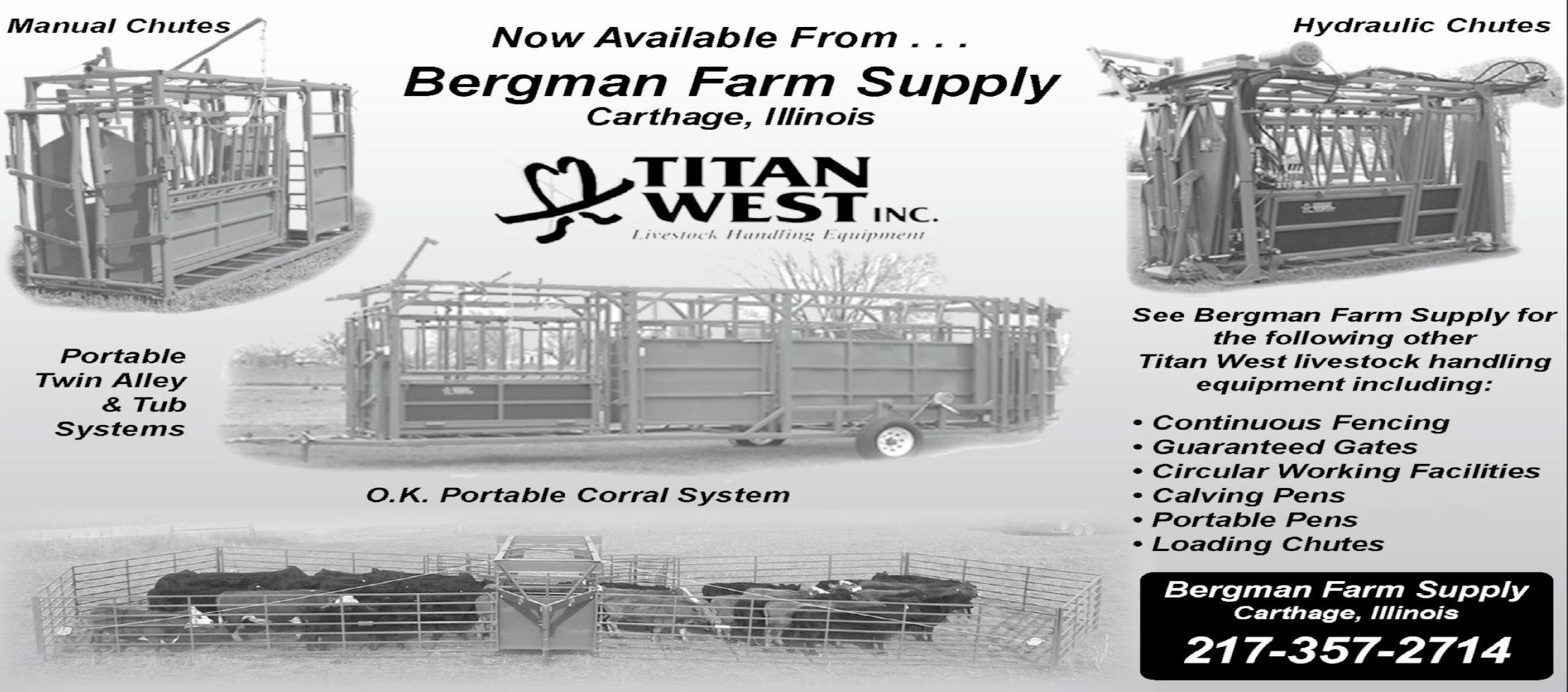
8 minute read
Gate Cuts
Paul Walker, DI Walker Consulting
Creating Our Future
Advertisement
Regarding finished cattle market price discovery, I have continued to track the cutout value: live cash price ratio since the August 20 date I reported in the last issue of Illinois Beef. From April 16 through August 20 cattle feeders left an average of $337.96 per steer “on the table” of unrealized income by not having a mandated 2.05:1 cutout value: live cash price ratio in force. During the 28 marketing days since August 20, cattle feeders have experienced an average unrealized income per steer in the amount of $ 432.87. Cutout value ($: cwt) peaked on August 23 at $348.03 with a reported high live cash price of $129.75: cwt for a ratio of 2.68:1. Since August 23 the cutout value has been slowly declining. The ratio peaked on August 27 at 2.70:1 with cutout value at $345.34 and live cash at $127.97. Today, as I write this article (September 30) the cutout value was $294.98, the high live cash price was $124.00: cwt and the ratio was 2.38:1. It seems, as predicted by several market advisors, the cutout value is steadily declining and live cash price is slowly following a down trend. It will be interesting to see how low cutout value and live cash will go. In past articles I have referred to this spring and summer’s ratio as a third Black Swan event. I now believe this is not a Black Swan event, but it is the new normality i.e., a Covid World, a shortage of both skilled and unskilled labor, inflation and a change in our country’s value system. Consequently, I do not believe the historical cutout value to live cash price ratio of 1.40 – 1.60 or even the 1.91 ratio of the 2017-2019 era will return. The hourglass shaped system we have of many feedlots, at the top, of a few major packers in the middle and many retail options at the bottom has resulted in two loosely related supply – demand curves, one between the feedlots and the packers and one between the packers and the retailers. It may be time for a government mandated maximum cutout value to live cash price ratio for establishing the daily price of low choice, yield grade 3.9 cattle. Packers will not voluntarily give the feeder the cattle’s true value; mandating that packers purchase a fixed percent of their daily harvest needs as live cash will not increase the price of cash cattle; increasing shackle space (increasing the ability of packers to harvest more cattle per day) and increasing the number of smaller packers will not increase the price of cash cattle; and, breaking up the big four packers will not increase the price of cash cattle. There is too much efficiency of scale for larger packers, consequently increasing the number of smaller packers may increase competition but it will not increase the price of cash cattle because smaller packers cannot afford to pay higher prices for live cattle and compete with the efficiency of larger packers.
It is interesting to note that as cutout value has decreased, the rib (one of the seven primals that determines cutout value) has not declined and as the cutout value increased, the price of the rib led the increase in price. For example, during the week of September 6 the weighted average price of boneless heavy ribeye reached $14.72: lb which is the highest price in history on the USDA cutout sheet. In the future, as cutout value declines, higher rib prices may decrease the rate of decline in cutout value. Historically, as cutout value has decreased the price of the primals making up the cutout value also, has decreased. This change in price structure may be due to “suspended fresh” trade. Suspended fresh is a process whereby the temperature of fresh beef is decreased to near freezing (not frozen) and held until retail sale. In effect near frozen is treated like fresh beef. Most of the beef trade views that suspended fresh is creating higher lows and causing the price differential between the high and low cutout value to flatten. There Is not any reporting of suspended fresh volume and price by the USDA or by any private reporting service. This makes pricing information harder to discover and track. Suspended fresh may be a game-changer just coming into its own-something to watch.
We can continue to go along as we have been, assuming supply and demand as tempered by what the packers want to pay determines the price of finished cattle; or we can directly tie the base price of live cattle to consumer demand allowing supply and demand to determine premiums and discounts. Since plant shutdowns and production slowdowns resulting from Covid 19 (beginning in March 2020) available packing capacity as measured by daily harvest has become a focus of the beef industry. According to John Nalivka (Sterling Marketing; Vale, Oregon) capacity (cattle harvested per day) is not the critical issue, rather capacity utilization is the focal point. A target of packers is to consistently operate a packing plant at 90% or higher. During 2021 the average plant capacity use has beet 87.3%. This is similar to the average capacity use of 88.3% in 2019 and higher than the 84.3% utilization rate of 2020. In fact, during April and May 2020 utilization capacity of fed beef plants averaged only 67.2%. Predicted reduction in cattle numbers through at least 2024 coupled with a tight labor supply and other supply chain issues (transportation, commodity shortages, etc.) for packing plants may further aggravate the issue of capacity utilization. As many feedlots are experiencing, packers are not aggressively buying fats, or they are buying finished cattle for 30-day out delivery. As a result of COVID experiences packers have learned that with aging, paid for plants, they do not have to operate at maximum capacity to maximize profit. Packers can raise cutout price (or maintain cutout value / minimize cutout value decline) to maintain an
appropriate supply/demand ratio, and an acceptable profit margin without harvesting more cattle or operating plants at maximum capacity. Operating plants at reduced utilization rates maintains a sufficient backlog of finished cattle that keeps finished cattle prices proportional to cutout value at a ratio that allows the packer to maximize profitability at the feeders expense. According to John Nalivka, the question is, “if capacity is increased (by building new plants) against a declining cattle supply and reduced capacity utilization, how will new plants carrying large debt coupled with working capital cost compete?” It seems to me that now is the time to conduct a national study evaluating a government mandated maximum cutout value: live cattle cash price ratio as an option for feeders to capture an appropriate share of the consumer dollar spent for beef. value) has not declined and as the cutout value increased, the price of the rib led the increase in price. For example, during the week of September 6 the weighted average price of boneless heavy ribeye reached $14.72: lb which is the highest price in history on the USDA cutout sheet. In the future, as cutout value declines, higher rib prices may decrease the rate of decline in cutout value. Historically, as cutout value has decreased the price of the primals making up the cutout value also, has decreased. This change in price structure may be due to “suspended fresh” trade. Suspended fresh is a process whereby the temperature of fresh beef is decreased to near freezing (not frozen) and held until retail sale. In effect near frozen is treated like fresh beef. Most of the beef trade views that suspended fresh is creating higher lows and causing the price differential between the high and low cutout value to flatten. There Is not any reporting of suspended fresh volume and price by the USDA or by any private reporting service. This makes pricing information harder to discover and track. Suspended fresh may be a game-changer just coming into its own-something to watch.
We can continue to go along as we have been, assuming supply and demand as tempered by what the packers want to pay determines the price of finished cattle; or we can directly tie the base price of live cattle to consumer demand allowing supply and demand to determine premiums and discounts. Since plant shut downs and production slow-downs resulting from Covid 19 (beginning in March 2020) available packing capacity as measured by daily harvest has become a focus of the beef industry. According to John Nalivka (Sterling Marketing; Vale, Oregon) capacity (cattle harvested per day) is not the critical issue, rather capacity utilization is the focal point. A target of packers is to consistently operate a packing plant at 90% or higher. During 2021 the average plant capacity use has beet 87.3%. This is similar to the average capacity use of 88.3% in 2019 and higher than the 84.3% utilization rate of 2020. In fact, during April and May 2020 utilization capacity of fed beef plants averaged only 67.2%. Predicted reduction in cattle numbers through at least 2024 coupled with a tight labor supply and other supply chain issues (transportation, commodity shortages, etc.) for packing plants may further aggravate the issue of capacity utilization. As many feedlots are experiencing, packers are not aggressively buying fats or they are buying finished cattle for 30-day out delivery. As a result of COVID experiences packers have learned that with aging, paid for plants, they do not have to operate at maximum capacity to maximize profit. Packers can raise cutout price (or maintain cutout value / minimize cutout value decline) to maintain an appropriate supply/demand ratio, and an acceptable profit margin without harvesting more cattle or operating plants at maximum capacity. Operating plants at reduced utilization rates maintains a sufficient backlog of finished cattle that keeps finished cattle prices proportional to cutout value at a ratio that allows the packer to maximize profitability at the feeders expense. According to John Nalivka, the question is, “ if capacity is increased (by building new plants) against a declining cattle supply and reduced capacity utilization, how will new plants carrying large debt coupled with working capital cost compete?” It seems to me that now is the time to conduct a national study evaluating a government mandated maximum cutout value: live cattle cash price ratio as an option for feeders to capture an appropriate share of the consumer dollar spent for beef.











